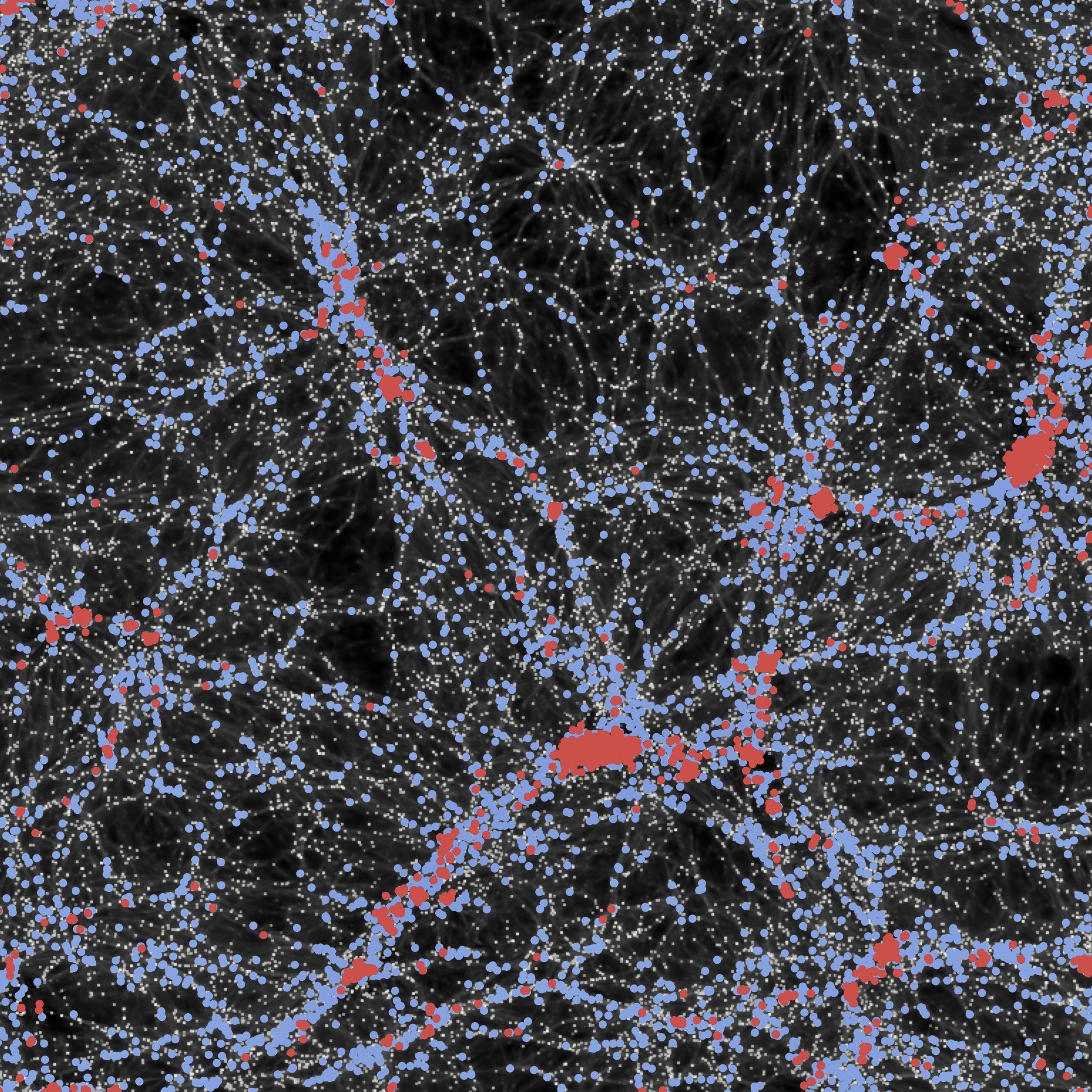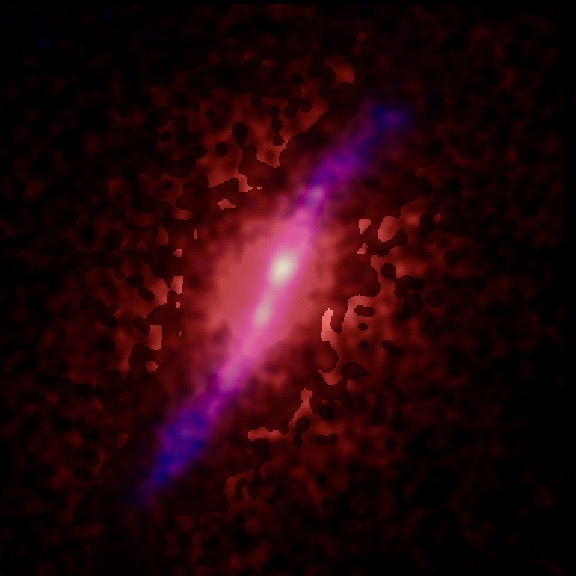
Calvin Osinga
Astronomy
Ph.D. Candidate
Philip Mansfield & Benedikt Diemer
I'm a Ph.D. candidate in the Astronomy
Department at University of Maryland - College
Park. Broadly, my research seeks to answer
questions about why our Universe resembles
the background video above, with a particular interest
in dark matter and dark energy!
I currently work with Prof.
Benedikt Diemer
researching a better framework to study dark matter
in universe-scale simulations.
I also help build maps of the universe and investigate
the many mechanisms that generate the diverse population of
galaxies that we see in the sky today.
I include some
personal interests and service work outside of research on my
About Me page.
The Research section
below includes approachable summaries of the research I do,
intended for audiences unfamiliar with astronomy. Publications
contains a list of my papers, ordered from
latest to earliest, and contains various links to find them and
supplementary materials for those papers. Note that a few sections of various pages are still under construction!

Mapping the Universe
The mysterious force that drives the accelerating expansion of the Universe known as dark energy remains outside our current understanding of physics. However, we find evidence for its existence in surveys of the distribution of matter. Maps of the universe allow us to track dark energy's behavior, bringing us closer to unraveling its nature.

Galaxy Evolution
Dark matter form structures called "halos" which house the seeds that eventually grow into galaxies. Thus, the properties of dark matter halos and their embedded galaxies are inevitably linked. Studying how dark matter shapes evolution of galaxies is the first step to understanding the physics responsible for the intricate panoply of galaxies we observe today.
